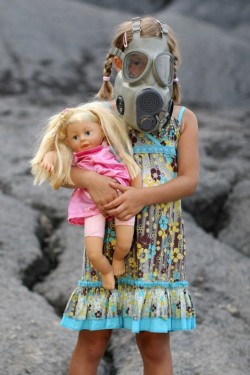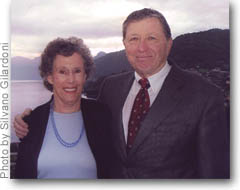 From Rachel Carson’s Silent Spring to current headlines in the news, there’s long been mounting evidence that we’re being poisoned by everyday items in our lives. I was crushed by the revelation that my trusty Nalgene bottle was leaching bisphenol A into my Brita-filtered water. The first time I had to purchase my own housecleaning supplies, I found myself torn between a well-marketed fear of germs and a wholly legitimate fear of toxic compounds. Like it or not, the unnatural creations of the chemical industry are everywhere.
From Rachel Carson’s Silent Spring to current headlines in the news, there’s long been mounting evidence that we’re being poisoned by everyday items in our lives. I was crushed by the revelation that my trusty Nalgene bottle was leaching bisphenol A into my Brita-filtered water. The first time I had to purchase my own housecleaning supplies, I found myself torn between a well-marketed fear of germs and a wholly legitimate fear of toxic compounds. Like it or not, the unnatural creations of the chemical industry are everywhere.
The facts of our chemical-laden reality are at once alarming and overwhelming. Philip and Alice Shabecoff’s Poisoned Profits: The Toxic Assault on Our Children casts environmental contamination in the context of kids, connecting the dots between the toxification of the young and a slew of once rare, now devastatingly commonplace childhood diseases. The authors — Philip Shabecoff, formerly chief environmental correspondent for The New York Times, and his wife Alice, freelance journalist and former executive director of the National Consumers League — report that childhood cancer rates have risen about 67 percent in the last half century. The Shabecoffs not only explain the science behind this number, but tell the stories of families personally affected by it. At points, it makes for grim reading.
But wait, there’s hope! Though we’re exposed daily to a smorgasbord of cancer-causing agents and other poisonous concoctions, the good news is there are alternatives out there, and they’re getting more attention as the dangers of toxic chemicals become better known.
The Shabecoffs acknowledge that their book deals with a depressing subject–but that’s why they wrote it. Change can happen, they say, but it’s up to us to make sure it does.
—–
Q. Have you seen, in the year since Poisoned Profits was published, that your message is reaching your intended audience?
A. Alice: We’ve found a pretty warm response among parents — blogs and websites and letters directly to us. We’ve gotten a bunch of totally heartbreaking stories, as well as people who call us or write us and ask us to help them deal with bad things that happen in their community. We had very good response from the scientific and health professionals, their journals.
Q. Have you witnessed a change in the way the public and policymakers view toxics?
A. Philip: One very major thing that has happened since then is we have a president who seems to understand these issues, and a Congress that is now not against the government protecting children, or anybody else. We have people appointed to key government positions, such as the Environmental Protection Agency, who do not see themselves as the servants of the corporations but the servants of the people. I think that’s the most significant thing that’s happened.
Alice: I add Michelle Obama into that, the step that she took in doing an organic garden. It was a symbolic step; at least she understands that children can be harmed by what’s in their food.
And then around the margins there have been [other] stories, especially about bisphenol A. In a way that’s annoying because if you focus on one little chemical, it almost means you’re not looking at the whole picture. But let’s look at it in a good light and say at least they’re beginning to see that some chemicals can do harm, and at least people are beginning to understand the concept that it could change the way the genes work.
Q. Michelle Obama got a negative reaction from agribusiness after planting her organic garden. What’s your take on that?
A. Philip: I think it’s par for the course. I think industry likes to protect its turf and its profits, and because it’s not sufficiently regulated, it can get away with doing things that harm our kids and the rest of us. I think the whole corporate culture has to change somehow if we’re going to solve our basic environmental problems and protect our children. Unfortunately, I don’t see that happening yet.
Q. Who bears the most responsibility to bring about change in a toxic landscape?
A. Philip: Ultimately, the American people are responsible. They are responsible in the way they conduct their daily lives, and especially their economic lives, like buying this terrible stuff that’s out there, by not educating themselves enough about what’s going on.
But then, of course, individuals alone cannot solve these problems, we cannot consume our way out of a toxic environment. The only entity that is powerful enough to stand up to these mega-corporations is government, and the government has to do the job at some point. I think that the Obama administration wants to do something, but whether it will be able to or not is another question. Opposition by conservative politicians who don’t want any interference with the private sector, who regard absolute free market as kind of a religion, are trying to block him. And they’re also trying to block him just so he’ll fail, so they can return to power.
 Alice and Philip Shabecoff
Alice and Philip Shabecoff
Alice: I agree with Philip, that the ultimate responsibility lies in the public, on the shoulders of the parents. We are a democracy and a free enterprise system; it’s up to people to make their wills known.
Philip: In the marketplace, and in the voting booth.
Alice: You don’t want to let the corporations off the hook. As we showed in the book, they know what they are doing, and they continue to do it, lawsuit after lawsuit, and story after story. But the only people who can really change them is the buying public.
Q. Is the current, more mainstream interest in organics and natural products just a passing trend, or do you believe that people are waking up to the reality of toxics?
A. Alice: I think it’s a true trend, which will grow. I don’t know the magnitude of it and how far it will spread. Is this something that only the college-educated people will take on, or is this something that will spread across the whole country to every level of economics and education? When you start to think about how people are interested in recycling and so on, that too is a harbinger of what we would love to see in terms of environmental health issues.
Q. Why has it been so difficult to draw attention to these issues?
A. Alice: It seems too overwhelming, and yet that was one of the messages [we want to get across]–it isn’t overwhelming. There are steps you can take in your own home and with your neighbors that will eventually change the picture. But there are people who just don’t want to face the music.
Philip: But we wrote about children because people can’t just throw up their hands about their children or their grandchildren. You may downplay it yourself in terms of your own health, but you want to do everything you can for your kids. Or at least that’s the way it should be.
Q. What’s the best way to spread the word and educate those around us?
A. Alice: I thought that we could make some inroads through parent groups. There are so many parent groups around the country–small networks of mothers, sometimes fathers, who have coalesced around various illnesses. The parents of the kids with autism are the most visible, but they exist for all of the illnesses that we talked about in the book. One way that we might be able to get some motion going, despite education, despite whether you’re small town or big city, is to work through these parent groups.
I’ve come across many parents who, when it comes to their children’s illness, they have educated themselves and they are fighting mad. If we could work through those networks of parent groups–and in fact, that’s what I’d like to try in the coming year–maybe we could make some changes in the community, the neighborhood level. And that’s one good step in the right direction.




